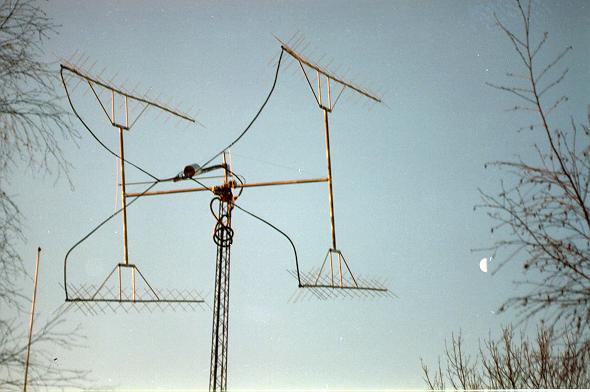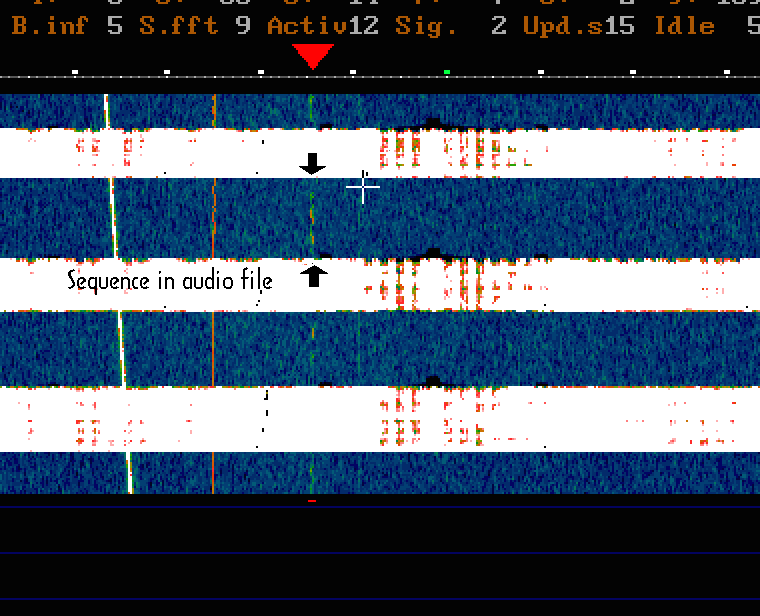Moon net. The fast channel for EME info.
Moon-Net is a mailing list used by radio amateurs to share information about communication by use of the Moon as a passive reflector for radio signals.
To subscribe, send an E-mail message to:
listserv@vm.StLawu.edu
The message to send is: Subscribe Moon-Net
The message should be followed by your name or call sign.
Liberia on the Moon!
Early in the morning of November 8 1998 this posting arrived via Moon net:Hello all, Is time to work Liberia via moon!! Few minutes ago I have had telephone call from Eric EA5GIY. Him told me that they wil be QRV for the 8/9 November moon pass. His working conditions would be very QRP 100W, 4 X 9el Tonnas and very marginal RX system, but the operation plan would be as follow: TX: QRG 144.080 +/- doppler RX: far as 2Khz up QTH LOc: IJ46?? Moonrise: 20 degrees above horizont. They plan to be QRV full moon pass. instead on weater conditions (heavy rain). Please be patient live cndx are dramatics... They find a small power generator to make this operation possible to keep the ham spirit there!! They look for your sigs via the Moon. 73s de Jorge EA2LUThe 9 element Tonna is a small antenna primarily designed for portable use according to the (about 1978) data sheet. The boom length is 1.5 wavelengths and the gain is about 10.5dBd. Four of these antennas, optimum stacked and fed with 100W would produce an effective radiated power of 7.3kW (EIRP) when no ground gain is used as would be the case at 20 degrees of elevation or more.
Equipment used to record the EL2RL signal
This was an excellent opportunity to try the current version of the PC RADIO, my currently best method of receiving weak signals.My antenna with 4x14 elements is rather small with the EME community standards, but it is highly optimised and together with the PC RADIO it receives the weak signals from the moon with the correct polarisation so no losses due to polarisation mis match occurs.

The antenna gain is 21.4dBd (at 144.300MHz) and the Y-factors
for galactic sources are:
Cygnus/Leo 6.80dB
Cassiopeia/Leo 5.73dB
By use of the VK3UM program the NF is calculated to -0.2dB and to 0.43 dB respectively. The actual NF of the pre-amplifiers is unknown to me, but it is probably in the 0.1 to 0.5dB range. The feeder losses are 0.15dB so the system NF should be in the 0.25 to 0.65 dB range. The Cassiopeia Y-factor seems reasonable but the Cygnus Y-factor is seriously affected by other noise sources entering through the side lobes. My antenna uses very large stacking distances to get maximum gain. As a side effect the side lobes are suppressed by only 9 dB or so, and therefore the Y-factor of galactic sources does not match values calculated assuming a "normal" pattern.
At 144.020 the antenna gain is 0.2dB lower so the
antenna/receiver producing the signals presented below
has the following
performance:
G=21.25dB
NF=0.5dB(?)
Feeder loss=0.15dB
The EL2RL signal
The figure below shows a few transmission periods during my QSO with EL2RL. The white areas is due to saturation of the receiver during my transmit periods. With this weak signal I needed many receive periods to make sure EL2RL was calling me - and with the call sign correct.

The sequence in the audio (.WAV) file EL2RLWAV.ZIP (219kB) made me sure that the station called was me because the final letters SZ of my call sign followed by EL2RL and a sequence of OOO can be heard here. I was sure on SM5B already before. If your Internet connection is slow, here is a compressed version of the same audio sequence EL2RLWAP.ZIP (12kB) To restore the audio, first use PKUNZIP to get the .WAP file. Then use WAVPAC. to get the .WAV file from the .WAP file.
The settings for the PC RADIO when this signal was recorded was:
Polarisation = -16 degrees.
Bandwidth = 13Hz (-3dB)
Shape factor (-30dB to -3dB) = 1.5 ( -30dB bandwidth = 20Hz)
Coherent detect with coherence factor = 5 (carrier detected at 2.5Hz bandwidth)
Very low power
The day after, the following message appeared on MOON-NET:Hello all, minutes ago, I have had a telephone call form Eric EA5GIY. Him and the students group are really happy for the results. They worked: SM5FRH, SM5BSZ, W5UN, WA9KRT and KB8RQ (chat with him!). Heard VE3KDH for one hour called, but they could4nt got attention from VE3KDH of his "O" report. Eric are very acknowledged to all stations that take part of the experiment making the QSOs possible. Some words about the station: The antennas (4 X 9el Tonnas), transverter, and 100WPA, were the same as month ago. This time the F.I. rig was and old Yaesu FT-80c channelized transceiver, without CW filter nor audio filter!!. They all heard the sigs from the moon into one small separate speaker!! They had some trhoubles with the petrol generator and batery charger, so only 80W was at the antennas! Due to school activity, they must went QRT at 0600UTC and dismantled the station (antennas, rig, etc) before the 0800UTC when start the institute activity. Well, congratulations to those that got a QSO and "Chapeau" for his fine "ears".... 73s de Jorge EA2LUThis means that the EIRP actually used by the EL2RL group was only about 5.8kW, which is what a typical single large yagi (5wl) with 15dBd would produce with about 110W at the feed point using no ground gain.